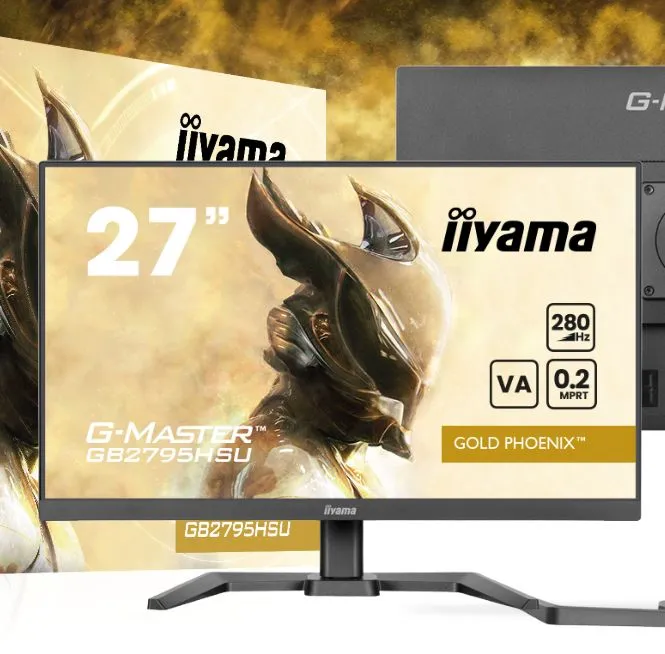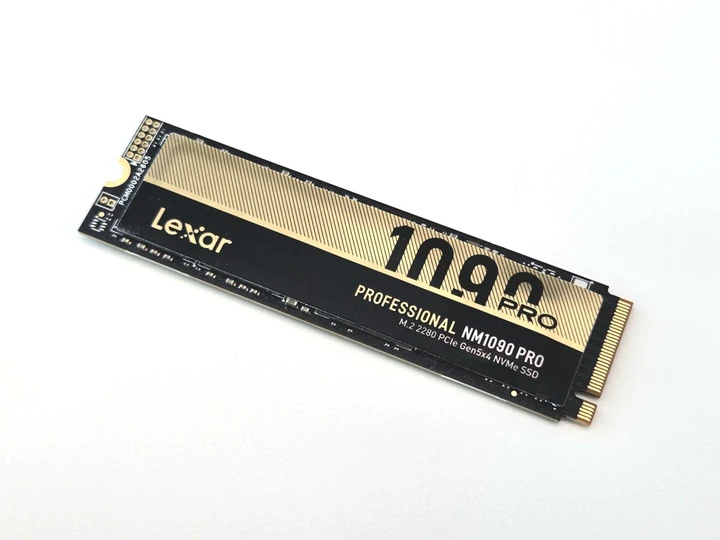Here is a roundup of today's reviews and articles:
Displays: iiyama 27″ GB2795HSU-B1 280Hz Full HD VA Monitor Review
Gaming: Lenovo Legion Go S makes the most of the Ryzen Z1 and SteamOS to slay the competition
Graphics Cards: Gigabyte GeForce RTX 5060 Gaming OC 8G Graphics Card Review
Motherboards: ASUS TUF Gaming Z890-Pro Wi-Fi Review
Storage: Crucial P510 1TB Review, Lexar NM1090 PRO PCIe Gen5 NVMe 2TB SSD Review
Displays:
eTeknix: iiyama 27″ GB2795HSU-B1 280Hz Full HD VA Monitor Review
Today, we're taking a look at a monitor from iiyama, a brand that's been in the display game for long than many of our readers have been alive! For those of us who've been around the tech block a few times, iiyama might conjure up memories of their classic CRT monitors back in the day – they've certainly evolved with the times, moving from those chunky boxes to the flat panels we see today. They were even my first ever 4K monitors, albeit the tech was a far cry from what is available today.
Gaming:
Tom's Hardware: Lenovo Legion Go S makes the most of the Ryzen Z1 and SteamOS to slay the competition
SteamOS and the Ryzen Z1 Extreme deliver a one-two performance punch for the Legion Go S
Lenovo Legion Go S makes the most of the Ryzen Z1 and SteamOS to slay the competition
Graphics Cards:
Funky Kit: Gigabyte GeForce RTX 5060 Gaming OC 8G Graphics Card Review
The Gigabyte GeForce RTX 5060 GAMING OC 8GB graphics card is powered by Nvidia's GeForce RTX 5060 GPU featuring Blackwell architecture withg 3840 CUDA cores and supports the latest DLSS 4. It uses a slightly overclocked GPU running at 2595 MHz and comes with 8GB GDDR7 Vram on a 128bit memory bus running at 28 Gbps.
Gigabyte GeForce RTX 5060 Gaming OC 8G Graphics Card Review - Funky Kit
Motherboards:
TechPowerUp: ASUS TUF Gaming Z890-Pro Wi-Fi Review
With a solid EFI, overclocking support, plenty of SSD and VRM cooling and dual Thunderbolt 4 ports for less than $300, does this attractive white board have what's needed to offer a premium home for your Arrow Lake CPU?
Storage:
APH Networks: Crucial P510 1TB Review
I remember when I got my first engineering job as a paid intern, I was expected to be physically present in the office from 8am to 5pm every day. The COVID era has turned remote work mainstream, and even with many return-to-office mandates nowadays, the hybrid work model and flexible scheduling has remained: We are no longer stuck being measured by how many hours we physically spend in the office. There is also language from the era as well, where statements like "Hey, sorry, you are on mute" and "Can anyone see my shared screen?" are becoming something we are all too familiar with. What gets interesting is how remote and physical work interfaces with each other. One time, a coworker asked me, "I got two scheduled back-to-back in-person meetings. How do I leave the first one if it runs overtime so I can get to the second?" I semi-joked around and said, "Why don't you try saying something like, 'Sorry, got to drop', and leave the room?" We both just laughed at the absurdity of that, even though we do that all the time on Microsoft Teams. As it can be seen, changing the interface also changes the way we behave, even though we are technically still doing the same thing. In the storage world, we have constantly seen changes in interfaces that change the way a drive performs, and today, we will investigate another interface change. Last year, I reviewed the Crucial P310 2280 1TB, the company's mainstream performance PCIe 4.0-based NVMe SSD. Today, we have the Crucial P510, which is upgraded to the latest PCIe 5.0 interface for a whopping up to 11000 MB/s read. How will this change in interface change performance, and to what extent in the real world? Read on to find out!
Funky Kit: Lexar NM1090 PRO PCIe Gen5 NVMe 2TB SSD Review
The Lexar NM1090 PRO PCIe 5.0 NVMe 2TB SSD uses 232-layer 3D TLC NAND chips and features both SLC Dynamic cache and 2GB of DRAM cache, which greatly enhances data transfer speeds. It has a total storage capacity of 2TB and offers a sequential read speed of up to 14,000 MB/s, with a sequential write speed up to 13,000 MB/s





